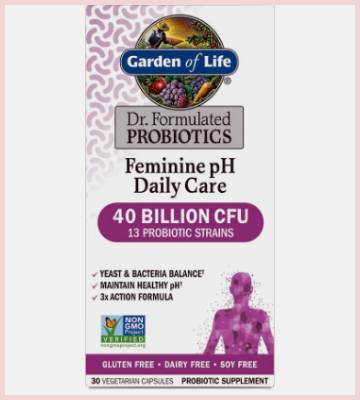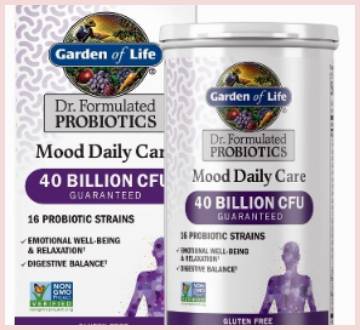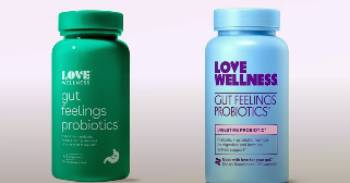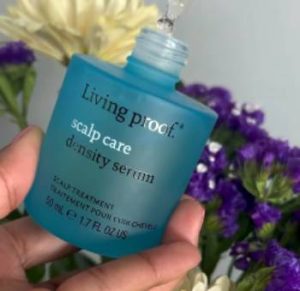Ladies, if you’re looking to support your vaginal health and keep your gut in check, Garden of Life Dr. Formulated Feminine pH Daily Care Probiotic is a must-have. This USDA Organic, Non-GMO, gluten-free supplement packs a triple-action punch with prebiotics, probiotics, and postbiotics to balance pH and promote yeast and bacteria harmony. After trying it myself, I’m convinced it’s a game-changer for feminine wellness. Let me share my experience, break down the pros and cons, offer maintenance tips, compare it to other brands, and answer your burning questions.
My Experience with Garden of Life Feminine pH Daily Care Probiotic

I’ve been on a quest to find a probiotic that supports both my gut and vaginal health without causing a fuss. After years of battling occasional yeast infections and digestive woes, I picked up Garden of Life’s Feminine pH Daily Care Probiotic, intrigued by its 40 billion CFU and 13 probiotic strains. The first thing I noticed was how easy it was to incorporate into my routine—one capsule a day, no refrigeration needed. I popped it in the morning with a glass of water, and it became as routine as brushing my teeth.
About a week in, I started feeling a difference. My digestion felt smoother, with less bloating after meals, which was a relief since I’d been struggling with IBS-like symptoms. By the second week, I noticed fewer feminine issues—no irritation or discomfort, which had been a recurring problem. After a month, my gut felt more balanced, and I hadn’t had a single yeast flare-up, even during a stressful work trip that usually throws my body off.
The shelf-stable bottle was a lifesaver for travel, and the vegetarian capsules were easy to swallow, though a bit large. I’ve stuck with it for months now, and it’s become my go-to for maintaining pH balance and overall wellness. The triple-action formula—prebiotics, probiotics, and postbiotics—seems to work together to keep everything in harmony, and I’m thrilled with the results.
Maintenance Tips for Garden of Life Feminine pH Daily Care Probiotic

To get the most out of this probiotic, you need to use it wisely and support its effects. Here’s how I make it work for me.
- Take It Consistently Every Day: Consistency is key. I take my capsule every morning to keep the good bacteria thriving. Missing doses can slow progress, so I set a reminder on my phone for the first few weeks until it became a habit. Taking it at the same time daily helps your body adjust.
- Pair with a Balanced Diet: Probiotics work best when you’re eating right. I focus on fiber-rich foods like fruits, veggies, and whole grains to feed the prebiotics. Avoiding excessive sugar helps prevent yeast overgrowth, which complements the probiotic’s pH-balancing effects. Think of it as teamwork between your diet and the supplement.
- Stay Hydrated: Drinking plenty of water supports digestion and helps the probiotics do their job. I aim for at least eight glasses a day, especially since dehydration can worsen bloating or constipation. It’s a simple trick that makes a big difference in how effective the probiotic feels.
- Store in a Cool, Dry Place: Even though it’s shelf-stable, I keep my bottle in a cool, dry spot away from heat or humidity to preserve the live cultures. My pantry works perfectly, but avoid leaving it in a hot car or steamy bathroom to ensure the probiotics stay potent.
- Monitor Your Body’s Response: Pay attention to how your body reacts. I noticed subtle changes in digestion within a week, but vaginal health took longer. If you experience discomfort or no improvements after a month, consult a doctor. Everyone’s body is different, and you might need a different strain or dosage.
Pros and Cons of Garden of Life Feminine pH Daily Care Probiotic

Pros:
This probiotic has some serious perks that make it stand out in the crowded supplement market. Here’s why I’m a fan.
- Powerful Triple-Action Formula: The prebiotic, probiotic, and postbiotic blend is a powerhouse. Prebiotics feed the good bacteria, probiotics deliver 40 billion CFU of 13 strains, and postbiotics support Bifidobacteria growth. This combo tackles both gut and vaginal health, helping me stay balanced. I’ve noticed fewer digestive issues and no yeast infections since starting, which feels like a win for my body.
- Supports Vaginal pH Balance: The clinically studied strains, like L. acidophilus and L. rhamnosus, are tailored for feminine health. They’ve helped me maintain a healthy vaginal pH, reducing irritation and yeast overgrowth. After months of use, I feel more confident and comfortable, especially during hormonal shifts when my body tends to act up.
- USDA Organic and Non-GMO: I love that this probiotic is USDA Organic and Non-GMO Project Verified. Knowing it’s free from artificial fillers, gluten, dairy, and soy gives me peace of mind. The clean ingredients make it feel like I’m nourishing my body without any junk, which is a big deal for someone with a sensitive system.
- Shelf-Stable Convenience: No refrigeration? Yes, please! The desiccant-lined bottle keeps the probiotics alive without needing a fridge, making it perfect for my on-the-go lifestyle. I’ve taken it on trips without worrying about spoilage, and the compact bottle fits easily in my purse or suitcase.
- Gluten-Free and Allergy-Friendly: As someone with gluten sensitivity, I appreciate that this is NSF Certified Gluten-Free. It’s also free from dairy, soy, and other common allergens, so it’s gentle on my stomach. I haven’t had any adverse reactions, which is rare for me with supplements.
Cons:
While I love this probiotic, it’s not flawless. Here are a few drawbacks I’ve noticed.
- Higher Price Point: At around $33.59 for a 30-day supply, this isn’t the cheapest probiotic out there. For me, the results justify the cost, but if you’re on a tight budget, it might feel steep compared to generic brands. I’ve found it’s often discounted online, but the regular price can sting.
- Large Capsule Size: The capsules are a bit bulky, which might be tough if you struggle with swallowing pills. I don’t mind them, but I’ve heard others find them hard to get down. You can open the capsules and mix them into water or juice, but that’s an extra step I don’t always have time for.
- Takes Time to See Results: Don’t expect instant miracles. It took me about a week to notice digestive improvements and two weeks for vaginal health benefits. If you’re impatient or dealing with severe issues, you might need to pair it with other treatments while waiting for the probiotics to kick in.
Garden of Life Vs. Other Probiotics
Garden of Life is my top pick, but how does it fare against other women’s probiotics? I’ve tried five competitors to give you the full picture.
- Garden of Life Feminine pH Vs. Renew Life Women’s Probiotic

Renew Life Women’s Probiotic offers 25 billion CFU and 12 strains, focusing on vaginal and urinary health. I found it effective for digestion, but the lower CFU count meant slower results for pH balance compared to Garden of Life’s 40 billion CFU.
It’s also gluten-free and Non-GMO but lacks the triple-action formula. The capsules are smaller, which is nice, but I needed two daily, which felt less convenient.
Garden of Life’s higher potency and once-daily dose make it my preference for comprehensive feminine wellness.
- Garden of Life Feminine pH Vs. Nature’s Way Women’s Probiotic Pearls
Nature’s Way Women’s Probiotic Pearls deliver 1 billion CFU in tiny, easy-to-swallow softgels. They’re great for vaginal health but felt underpowered for my digestive issues. The low CFU count meant I didn’t notice much change in bloating or pH balance. They’re shelf-stable and gluten-free, but the lack of prebiotics and postbiotics limits their impact. Garden of Life’s robust formula and higher CFU count provide stronger, faster results, making it the better choice for women needing both gut and vaginal support.
- Garden of Life Feminine pH Vs. Love Wellness Good Girl Probiotics

Love Wellness Good Girl Probiotics pack 1 billion CFU and eight strains, targeting vaginal pH and microbiome balance. I liked the small capsules and no-refrigeration convenience, but the low potency didn’t do much for my digestion or yeast issues.
It’s gluten- and dairy-free but lacks the organic certification I value. Garden of Life’s triple-action formula and clinically studied strains deliver more noticeable benefits for pH balance and overall health, making it a superior option for long-term feminine wellness.
- Garden of Life Feminine pH Vs. Ritual Synbiotic+
Ritual Synbiotic+ combines prebiotics, probiotics (11 billion CFU), and postbiotics in a vegan, shelf-stable capsule. It helped with bloating, but the lower CFU count and fewer strains (two vs. Garden of Life’s 13) meant slower vaginal health improvements. It’s Non-GMO and third-party tested, but the subscription model is pricier. Garden of Life’s higher CFU, organic ingredients, and broader strain diversity give it an edge for women seeking comprehensive gut and vaginal support without ongoing costs.
- Garden of Life Feminine pH Vs. HUM Nutrition Private Party
HUM Nutrition Private Party offers 10 billion CFU and three strains, plus cranberry extract for urinary health. It reduced my UTI frequency but didn’t match Garden of Life’s digestive benefits. The capsules are vegan and gluten-free but require refrigeration, which was inconvenient. The lack of prebiotics and postbiotics limits its scope. Garden of Life’s higher CFU, shelf-stable design, and triple-action formula make it more versatile and effective for balancing pH and supporting overall feminine health.
Frequently Asked Questions (FAQs)
Feminine probiotics are generally safe but can cause mild side effects like bloating, gas, or stomach upset, especially when you first start taking them. These usually fade as your body adjusts. Rarely, people with compromised immune systems might face infection risks. I haven’t had issues with Garden of Life, but if you notice persistent discomfort or unusual symptoms, check with your doctor to ensure the probiotic is right for you.
Garden of Life’s Feminine pH Daily Care Probiotic is well-tolerated for most, but some users report mild bloating or gas in the first week. I experienced slight bloating initially, which resolved quickly. Those with allergies should confirm it’s safe, as it’s made in a facility that processes potential allergens. Serious side effects are rare, but if you have a weakened immune system, consult a healthcare provider before starting.
It varies, but I noticed vaginal pH improvements with Garden of Life after about two weeks. Digestive benefits kicked in sooner, around a week. Most users see changes within one to four weeks, depending on their body and consistency. For best results, take it daily and pair it with a healthy diet. If you don’t see progress after a month, talk to a doctor about other options.
Yes, daily probiotics can support vaginal and gut health, especially for women prone to yeast infections infections or digestive issues. I take Garden of Life daily, and it’s helped me stay balanced. Consistency is key to maintaining healthy bacteria levels. However, check with your doctor if you have specific health conditions or are pregnant, as individual needs vary. Daily use maximizes benefits like pH balance and immune support.
Final Thoughts
If you want a probiotic that delivers on vaginal and gut health, Garden of Life Feminine pH Daily Care is the one to try. Its organic, triple-action formula keeps your pH balanced and your digestion smooth. I’ve seen real results, and I’m betting you will too. Grab a bottle, make it part of your routine, and feel the difference. Your body will thank you!



